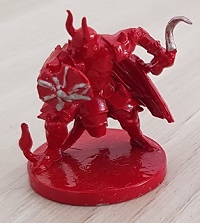In this article, you can read about ways to improve, enhance, or pimp your board games by upgrading your content and components.
How To Pimp A Board Game?
A board game can be pimped in several ways, but mainly it comes down to Content Enhancement (expansions, fan-made modes) and Component Enhancement (sleeves, inserts, painting, 3D printing).
Introduction
We live in a consumerist society, which means we all own a lot of stuff. Some of it we use often, some of it rarely, and some is just junk – stuff we never use.
The same could be said about board games. There are some we have bought and never played, some we played only a few times. Others we play regularly, but there is usually just a selected few (or even just one), we can rightfully call our favorites. These are the games we return to often, games that touch us in a certain way, let that be mechanically, or thematically. We think about these games when we go to sleep and plan our free time around playing them.
It’s only natural that we seek opportunities how to make these games even better. To enhance the gaming experience, pimp a game if you like that word better. These “pimps” can enhance the gaming experience but come with a monetary cost. The results are often diminishing as you invest more time and money into a pretty-much finished game. Although you can enhance every game you own, it’s therefore financially prudent to only pimp the games you love the most.
There are several ways the “pimping” can be done, but I’ve narrowed it down to two main categories, Content Enhancement, and Component Enhancement. Software and hardware, if you will.
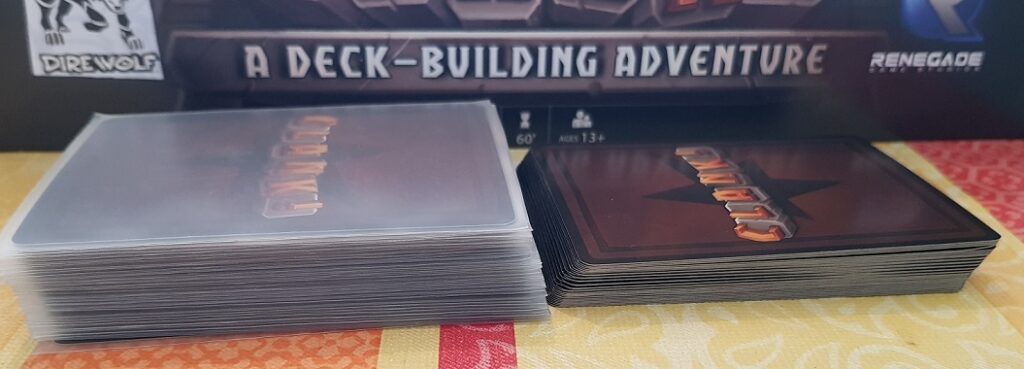
1. Content Enhancement
Expansions and Editions
The most obvious way to get more content for your favorite board game is to buy an expansion, provided there’s one (or more) available. Expansions are roughly divided into mandatory (those that elevate the gameplay to a higher level) and optional (those that just add more things to do), and the overall added value can vary. Regular research steps apply, but since you’re a fan, you’ll probably just buy the expansion anyway.
If the game received a newer, streamlined edition, a reprint, a compilation (deluxe or ultimate edition), collector’s edition (these usually include expansions, as well as premium components) you might want to consider upgrading. Or, if your copy has received a lot of wear and tear from hundreds of game hours with it, you can treat yourself to a new copy of the same game.
Fan-Made Content
The world is a big place and if you have a favorite board game, it’s likely you’re not the only one. Go check a game’s page on BoardGameGeek and meet the real fans. Those who spend numerous hours creating fan-based content. Player aids, custom scenarios, game modes (solo modes being particularly popular), and even campaigns.
It can be overwhelming to see what is available for certain titles and the quality can fluctuate. But if you have the patience, there’s a lot of useful material.
Researching
Those were the ways how to improve the content externally, now we’ll take a look at some of the ways to improve it internally – by working on how you perceive it.
A lot of that can be done before the game, just by research. If the game has an interesting theme (history-themed games excel at this), there’s no limit on the material. Online articles, documentaries, movies, and books. I love when a game sparks an interest in a topic and the subsequent research I do because of that. It is pure enjoyment for me.
For example, when I reviewed Lewis & Clark, I became interested in the historical background of the expedition. Never have I imagined, that I will learn that the actual path of the expedition can still be traced today. They found increased lead residues throughout the whole trail. Lead was used to treat syphilis.
Setting the Mood
The second part is done during the gameplay – setting the mood. This is easier the more players have done the research part, but suitable background music and a bit of role-playing can do more than you’d think. Immerse yourself in your role and don’t be shy doing some impressions: Darth Vader is mandatory in Star Wars board games, as is “So it begins” in Lord of the Rings board games. Or maybe just an occasional “Arrrr”, if you play a pirate-themed board game.
2. Component Enhancement
One of the big advantages of board games over video games is to be able to see the board in front of, touch the meeples, hold the cards, and move the pieces. It’s about that tactile feeling, the feeling of owning quality components, and seeing how pieces of wood and cardboard work together to form a game. Investing in the component part of the board game will also definitely increase your enjoyment while playing.
Card Sleeves
Card sleeves are one of the most obvious options. Cards are a component that is heavily present in board gaming, and also the one that is most susceptible to wear and tear from all the shuffling and handling. You can learn more about sleeving in our Should you sleeve cards? article.
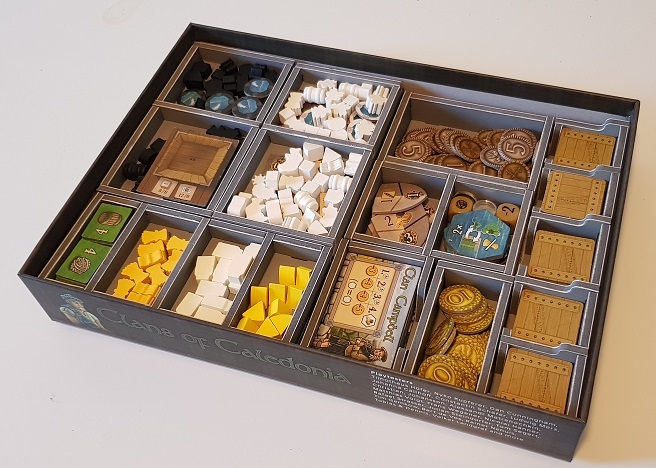
Box Inserts And Component Containers
Board games can come with hundreds of component pieces. Cards, meeples, tokens, chits, coins, miniatures, and cards. They are a pain in the ass to sort and handle, especially since most board games only offer plastic bags as a storage solution. Improving this part will significantly decrease the time needed to set up and put away a game, as well as help you during the gameplay itself.
There are several options here. The cheapest is definitely the DIY (do-it-yourself) option. With the amount of packaging each household plows through, you need only your imagination and some basic cut-and-glue skills to create decent solutions. Plastic containers for chewing gums, chocolate boxes, cheese boxes, yogurt cups, custom cardboard containers, and so on.
Moving further up the price ladder are special plastic containers with small compartments, which can be bought relatively cheaply. Personally, I don’t like them. I’m not a fan of using plastic for every problem, and since I can make something similar myself, I rather do that.
If I’m buying anything, it will be a dedicated box insert. These are real lifesavers, as they are made for that title alone, making sure every component has its right place. I’ll tell you one thing. your OCD is gonna be grateful when everything is so neatly packed! 🙂
Several manufacturers and materials are available. From best bang-for-your-buck foam (i.e. Folded Space) to more premium laser-cut techniques. Whatever you’re willing to spend.
Using Bowls And Dice Towers
If you don’t use an insert (and sometimes even if you do), one thing that can be very beneficial during the gameplay is using bowls for small components. These can be tee cups, cereal bowls, or something else. Important thing is that they have a nicely rounded bottom, which makes grabbing stuff out of them a breeze. And the table will look a lot cleaner with them. Just don’t forget to wash them before you use them for food again!
For games that use a lot of dice, a dice tower is appreciated. Its job is to make sure the dice are thoroughly rolled each time, and also that they land neatly at the bottom of it, instead of being scattered all over the table. This is particularly true with younger players, who don’t yet have much control over their throws.
Sure, throwing dice into a box lid will do just fine, but a beautifully crafted dice tower is a few steps above that. I recommend DIY options, although the market is full of “off-the-shelf” solutions.
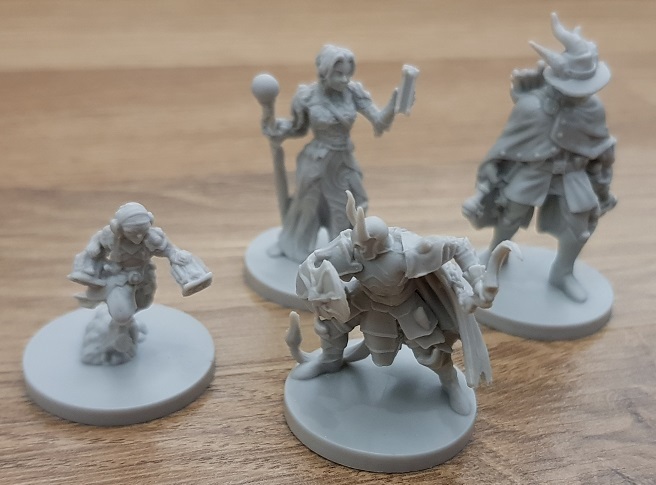
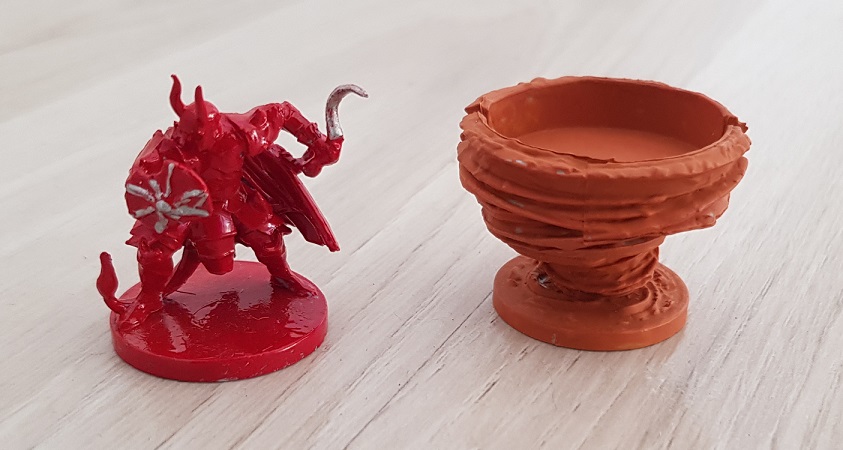
Miniature (And Other Component) Painting
Nothing personalizes a board game more than painting components, especially miniatures. These are proving to be very popular with all the Kickstarter stuff going out. I won’t tell you how much of a difference it makes – I’m sure you’ve seen hundreds of images of miniatures that look life-like.
What I will say, is that you don’t have to be an expert to do it. Even a poorly painted miniature looks way better than grey plastic. Don’t be shy and try it out. Use just a couple of basic colors at first. Then, if the sub-hobby interests you, it’s a world to discover.
3D Printing
3D printers are becoming more and more accessible, and with them, the number of plans for board game components is also increasing. There are all sorts of stuff you can find: upgraded components, 3D terrain, and so on. If you’re tech-savvy, you can design things yourself, you can buy plans from others, or even buy fully printed (and sometimes painted) pieces.
The prices can really skyrocket here, as these pieces are often considered art. But they can turn your game into an exhibit that will turn heads. Etsy is a great site to start exploring.
Upgraded Components
Some publishers offer upgraded component packages themselves. These include metal coins, detailed resource tokens, neoprene game and player mats, custom dual-layered player boards, etc. If an official upgrade is available, I’d get it before going to a third party.
Board Game Tables
We’re almost done, but there’s one other thing that screams that you’re a hardcore board gamer. A dedicated board game table is a way to pimp not one, but all of your board games. Its smooth and soft surface is phenomenal to play on and the craftsmanship is brilliant with the higher-end models. But we’re really deep into diminishing result territory here, because tables can get really expensive.
But if you got space and money, why the heck not?
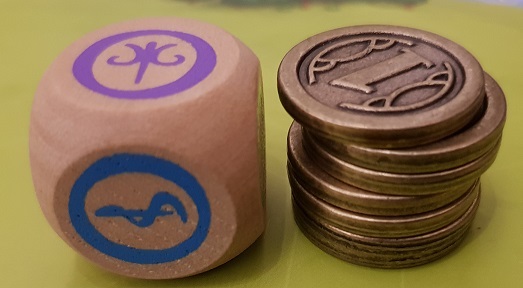
Conclusion
As you see, there are a lot of ways to pimp up your board game. The bottom line would be that you can invest much as you are willing to. While the game will stay fundamentally the same, the experience can be much more immersive.
What is your favorite way to enhance a board game? How many of your board games are pimped?
Subscribe for more articles like this
